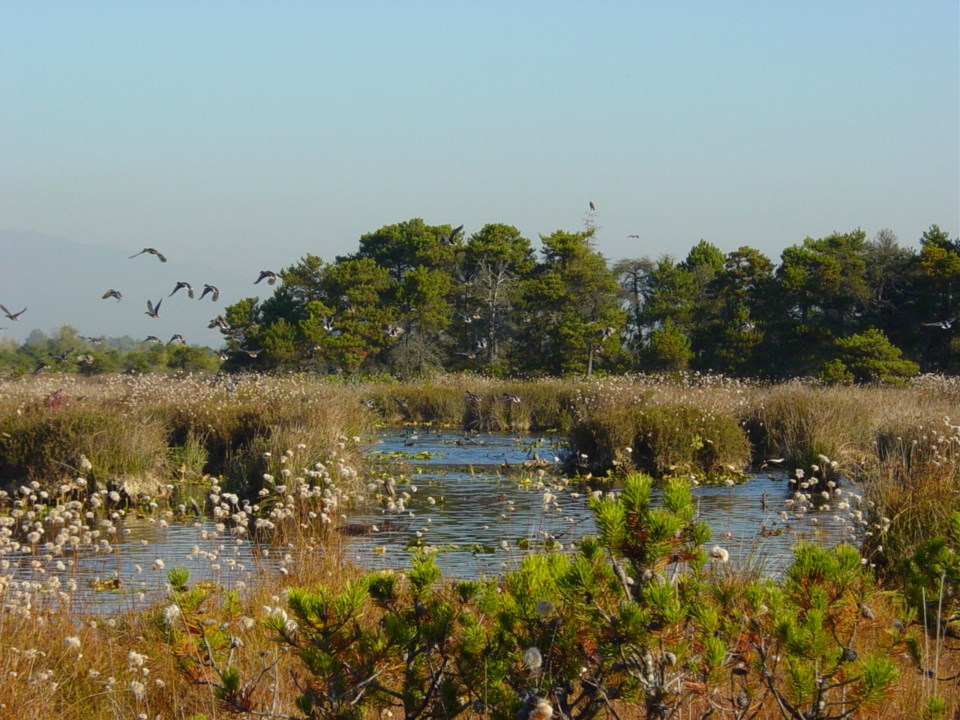Fires in Burns Bog can be particularly difficult to fight.
“It’s very dangerous…with the wind direction and wind shifts, very smoky and, as everyone is aware, with bog land fires can go underground, so that’s another danger we have to be aware of. Recently with raising the water level in the bog, we also have to be aware of soft surfaces and soft ground,” said fire chief Dan Copeland when describing efforts to control the wildfire that started Sunday afternoon at the bog.
Although an above-ground bog fire can be contained from spreading quickly, it needs to be doused before it seeps downwards and spreads underground. Once a fire goes underground, it can spread in many directions, making it extremely difficult to put out.
Mayor Lois Jackson said she’s concerned for fire crews for that reason.
The Delta fire department several years ago developed the Burns Bog Fire Management Plan, aimed at helping fire crews battle different types of blazes that can occur in the unique and sometimes treacherous ecosystem.
A special operations manual, which is continually being updated, contains such details as flow charts, bog fire rankings and fire history as well as maps and grids showing undisturbed vegetation, water sources, access routes and sections that have been harvested for peat, which make the ground not as solid as it may appear.
Also listing a detailed "bog box" of where special equipment at various fire halls and the Greater Vancouver Regional District is located, the enormous amount of detail in the manual is useful in helping the department quickly come up with an action plan.
The bog has been the site of several serious fires, which can burn underground for months in the methane-rich peat. Major fires occurred in 1977, 1990, 1994, 1996 and 2005.
Officials say there’s no indication yet what started Sunday’s fire.
The 2005 fire burned for over a week in a 200-hectare area in the southeast corner of the bog. It was believed that fire was started by human activity.
The 1996 blaze covering a 170-hectares burned for two weeks. Two men confessed to butting the cigarette while on a hike. They doused it with water thinking it was out, but it smoldered for 24 hours until it erupted into the largest bog fire at the time.
Most of the bog is closed to the public in an effort to maintain the ecosystem’s integrity as well as avoid potential fires.
The Corporation of Delta, meanwhile, has a key role in maintaining and improving the water levels in the bog, which is fed entirely from perception and does not get any water from rivers, so that the wetland doesn’t dry up. It’s part of a bog management plan involving Delta and Metro Vancouver.
In 2004, four levels of government -- federal, provincial, regional and municipal -- jointly purchased 2,040 hectares (5,038 acres) of Burns Bog for $73 million.
Even before that historic purchase, concern was raised about the bog potentially drying up and becoming even more prone to devastating wildfires. The Burns Bog Ecosystem Review noted the bog receives enough rain to sustain itself, but a lengthy system of drainage ditches at the time made the area more prone to drought and fire.



